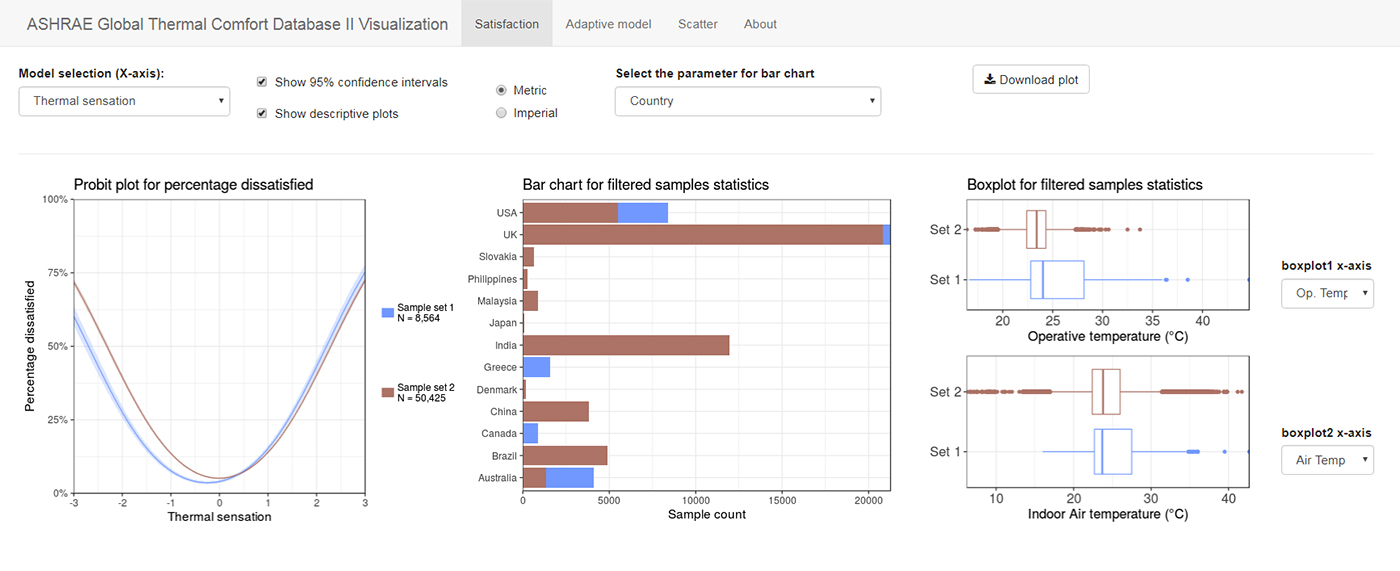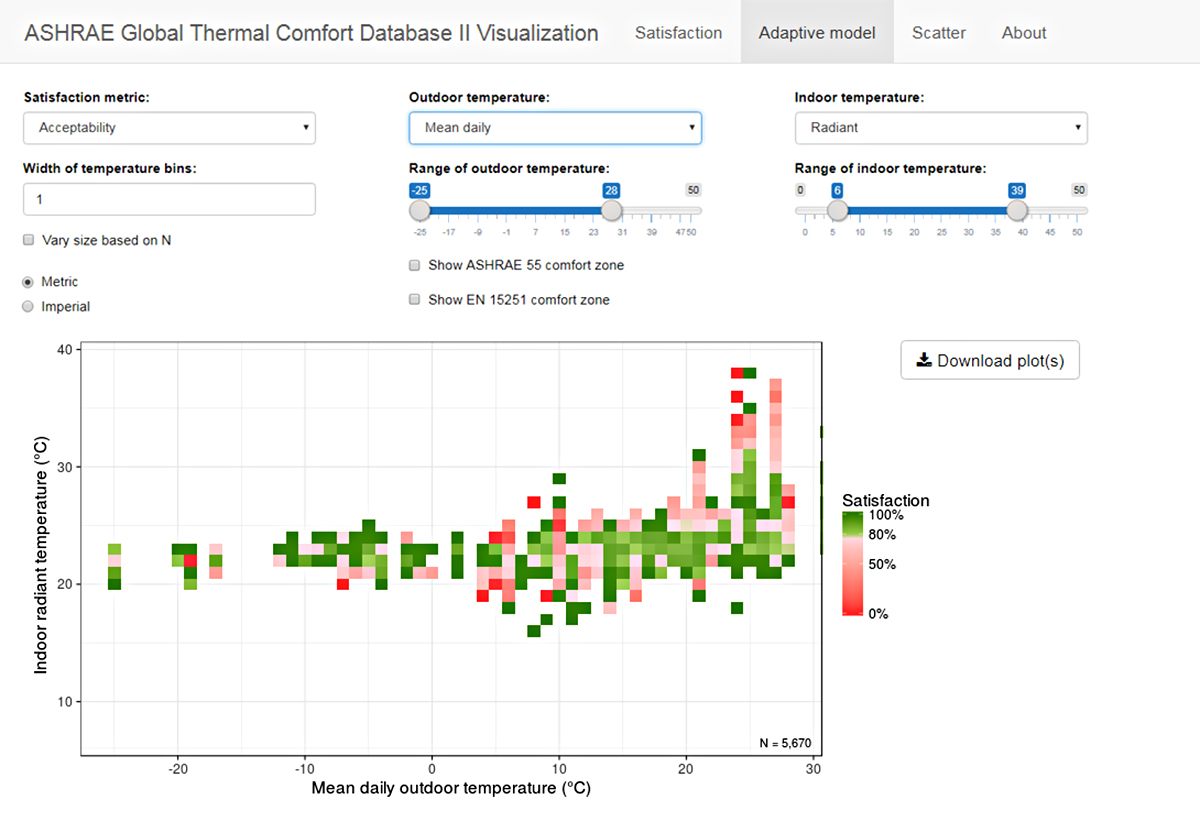A new suite of free and publicly available online resources has been launched to facilitate academic and professional studies of thermal comfort in buildings, the result of a four-year effort led by the Center for the Built Environment at UC Berkeley and the University of Sydney’s Indoor Environmental Quality Laboratory. These tools can be used to inform questions about thermal comfort, and to encourage the design of climate-responsive and comfortable low energy (and ZNE) buildings.
The tools include an interactive visualization tool, a ‘query builder,’ and access to a repository of thermal comfort data collected from field studies from around the world. This work serves a fundamental goal of CBE’s research consortium: to make key research findings available to industry and to provide ‘actionable insights’ that improve building design and operation. The work was supported by the ASHRAE grant, ‘Global Thermal Comfort Database II,’ which builds on a project completed in the 1990s (and described below). The project was co-funded by several other sources, including CBE partners, and is described in detail in a recent article in Building and Environment.
The database holds findings from research conducted over two decades, created in collaboration with over 60 contributors around the world who released their raw data for wide dissemination. The research team collected over 107,000 rows of data, pairing subjective ‘right-here-right-now’ comfort responses with environmental measurements relevant to thermal comfort. In addition to being an impressive body of collaborative data collection (the largest thermal comfort database to date), the project team strove to build resources for both industry practitioners and researchers.
Interactive Visualization Tool
The visualization tool is a powerful and user-friendly interface for researchers and practitioners to explore and navigate their way around the large volume of data. The interface is divided into three pages to examine satisfaction scores, adaptive comfort, and other variables, using preset boxplots, bar charts and scatter plots that enable rapid data visualization and analysis.The tool is online here.

Satisfaction interface for the comfort database visualization tool.
Database Downloads
Design practitioners and others who are more proficient in Excel or other numeric/statistical software can perform their own analyses by downloading the full database, or a subset of the data. Research data is available including building and occupancy types, climate, demographic variables, subjective thermal comfort states, indoor thermal conditions, and many other variables. Users can obtain this data using the Dryad repository or the Github repo for the data and documentation.
These tools were created to inform a diverse range of both design and research questions. For example, someone looking to understand comfort temperature limits when designing a mixed mode-building could use the database to inform set point control options based on field-acquired occupant comfort votes, rather than laboratory-based suggestions found within a guideline or standard. Or an engineer tasked with specifying elevated air velocities in offices (e.g., for fans) could use the database to analyze acceptable velocities at given air temperatures. The database also contains data from different building types, such as homes or schools, contexts for which guidelines are difficult to find.
Background on this Database Project
The ASHRAE RP-884 ‘Thermal Comfort Database I’ was compiled in the late 1990s for the purpose of testing the adaptive thermal comfort hypothesis and developing a new model based on this. In 2004 the resulting model went on to form the empirical basis of ASHRAE’s adaptive thermal comfort standard for occupant-controlled, naturally conditioned spaces (ASHRAE Standard 55). The original project brought together high-quality measurements of indoor thermal environments and simultaneous subjective thermal comfort evaluations from 52 field studies conducted in 160 buildings worldwide, mostly commercial offices, from 1982 to 1997. The project team assembled into a single repository almost all of the scientifically rigorous field study datasets available at that time (about 22,000 questionnaire responses with accompanying instrumental measurements). Upon completion of the original ASHRAE research project, the research team shared the online database with the global thermal comfort research community. The new project greatly expands this, both in terms of including data collected in the years since, and also taking advantage of the new ability of creating online tools to facilitate the use of this data.

